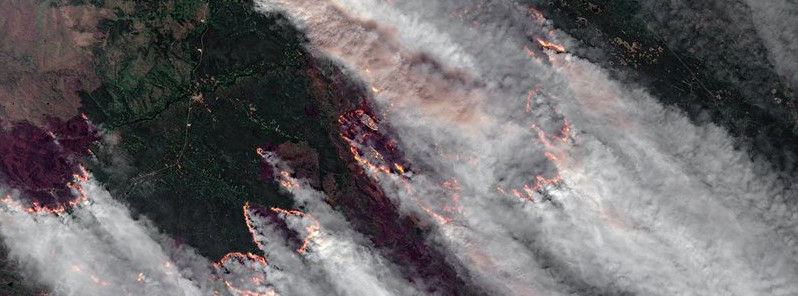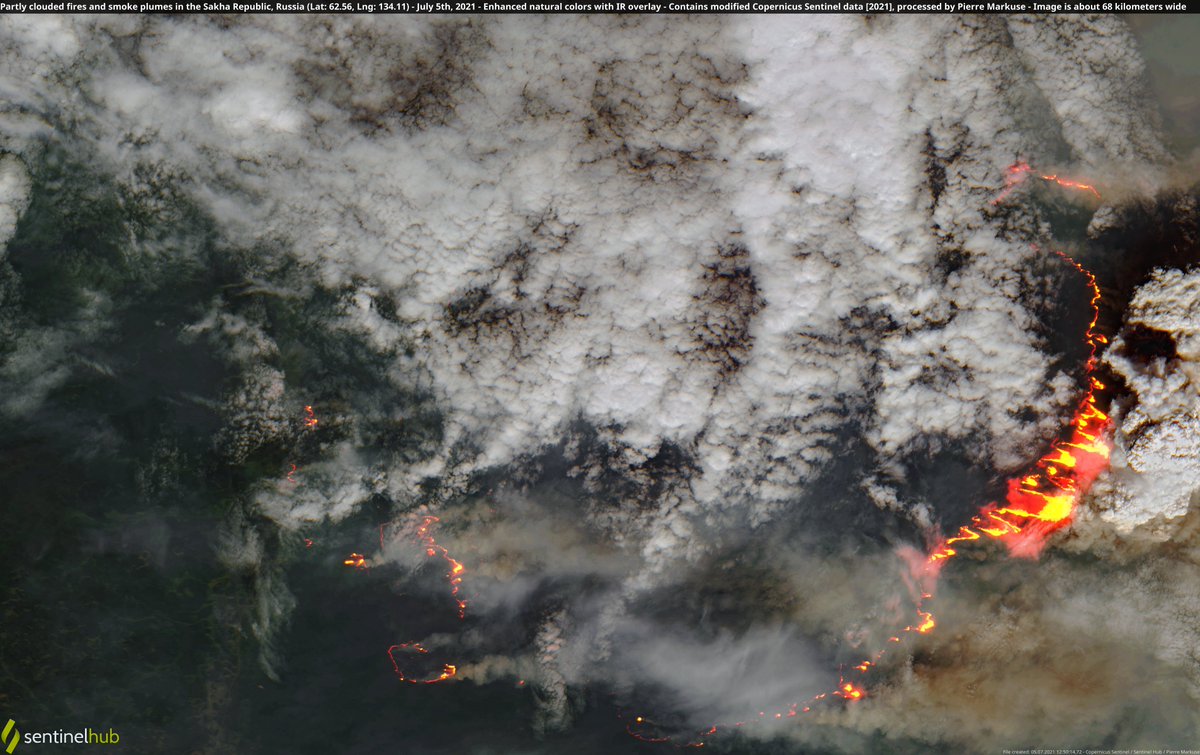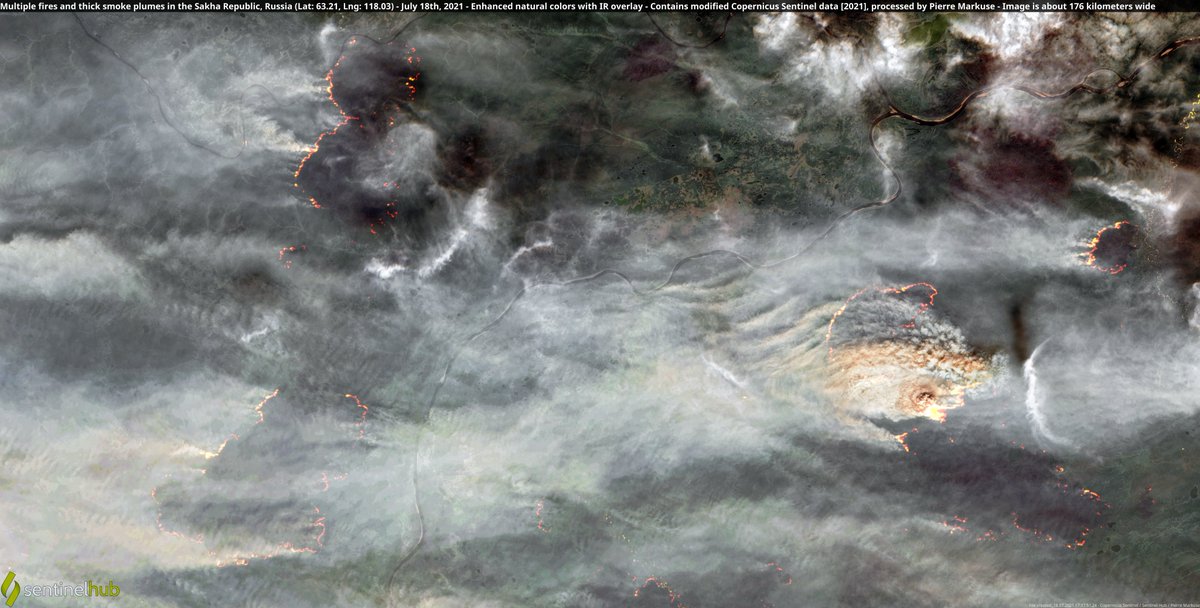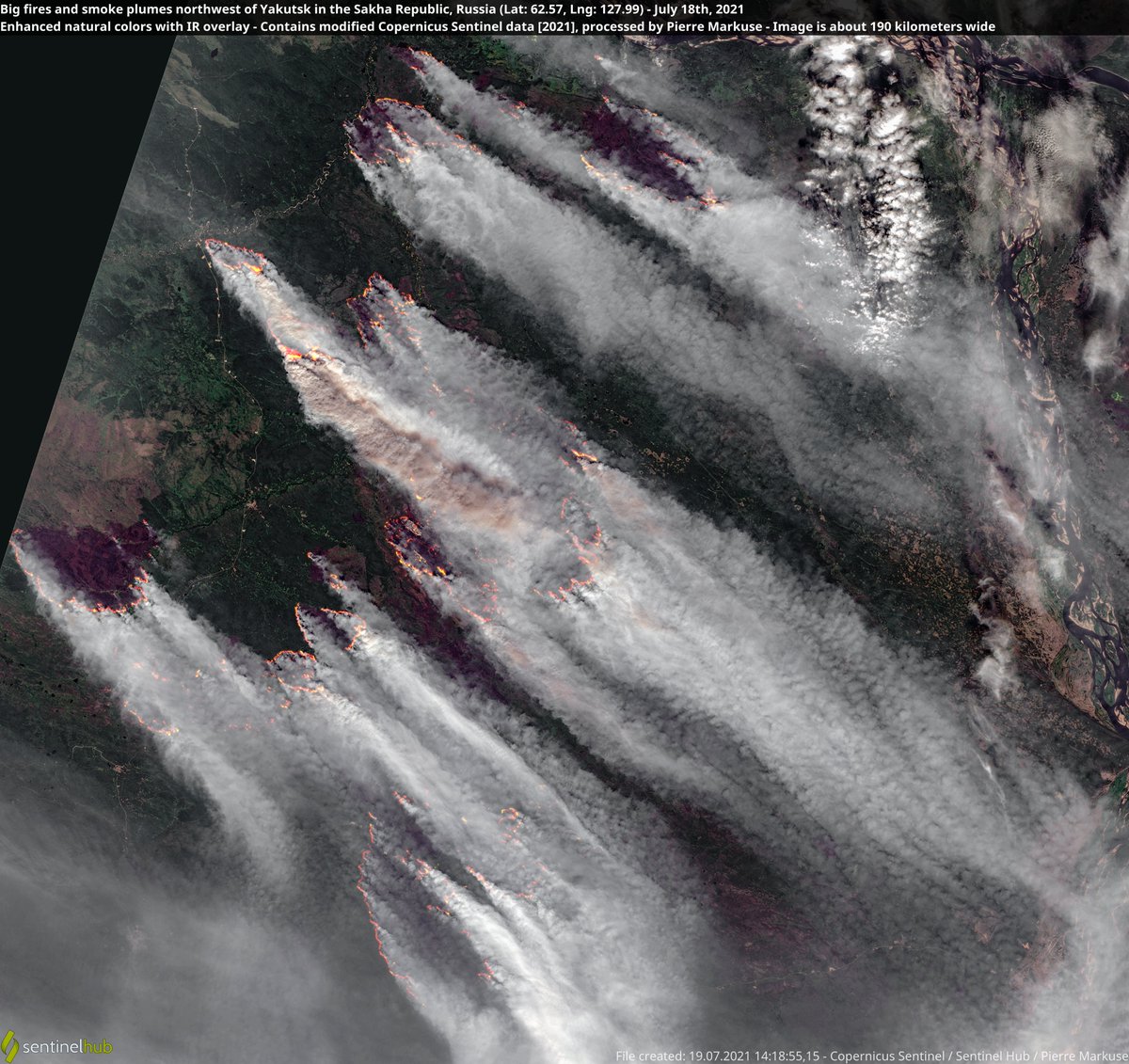Wildfires consume 2.5 million ha (6.2 million acres) of forests in Yakutia, Russia

According to statistics released by the Russian Ministry of Emergency on July 20, the 2021 wildfires in Yakutia (Republic of Sakha) — the largest and coldest republic of the Russian Federation — have so far consumed 2.5 million hectares (6.2 million acres) of forests.
- Overall, Yakutia wildfires in 2021 are less destructive than in 2020, when they raged through most of July and August.
- In addition, they are now further south, nearer the main areas of population.
- As of July 20, there are more than 400 hotbeds of natural fires across Russia – most of them in Sakha.
There are now more than 300 wildfires in Yakutia but only half of them are being actively suppressed. Thousands of firefighters are being helped by aircraft and, where possible, artificial rain technology developed in Soviet times.
To make the rain, the ministry is using Antonov-26 cloud-spiking plane to lace the clouds with a chemical cocktail of weather-changing silver iodide, liquid nitrogen, and dry ice.





Image acquired: July 5, 2021. Processed by Pierre Markuse. Credit: Copernicus EU/Sentinel-2, Pierre Markuse


Image acquired: July 18, 2021. Processed by Pierre Markuse. Credit: Copernicus EU/Sentinel-2, Pierre Markuse


Image acquired: July 18, 2021. Processed by Pierre Markuse. Credit: Copernicus EU/Sentinel-2, Pierre Markuse
"Most of the areas of fires in 2021 fall in the zone of 60 – 65° N," said Evgeny Ponomarev, associate professor at the Siberian Federal University, and senior researcher at the Sukachev Institute of Forest.
"In 2020, the greatest damage was recorded in the zone of 65–70° N. So the extreme movement of fires to the north of the region has not yet been repeated," Ponomarev added.
In 2020, almost 69% of all areas covered by fires accounted for the zone north of 65° N. In addition, almost 30% of all fires in Yakutia were recorded north of the Arctic Circle (67 ° N).
"In 2021 – about 9%, and the area of fires in the circumpolar regions today is almost 10 times lower than it was in 2020," Ponomarev said.


The latitudinal distribution of Siberian fires in 2020. Credit: International Association of Wildland Fire (IAWF)
The total estimated burned area, which includes forest and all types of non-forest fires in Siberia, from the beginning of the 2020 fire season in March through the end of September, was about 26 million ha (64 million acres), according to the International Association of Wildland Fire (IAWF).
Please note that the IAWF number is for the entire Siberia, not just Sakha, and is different from official data, which would cover fires only in forest zones.
From the IAWF 2020 overview1:
~31% (8.4 million ha / 20.8 million acres) of the fires in 2020 occurred in the steppe regions in southern Siberia.
13% (3.5 million ha / 8.6 million acres) was in the tundra to the north.
~37% (14.3 million ha; 35.3 million acres) was in various forest types, including pine, mixed conifer, and larch forests.
Total burned areas in 2020 ranged from about 6.1 million ha (15.1 million acres) between 60 and 65 degrees N to 6.8 million ha (16.8 million acres) between 65 and 70 degrees N.
The number of fires, varied markedly in the different zones, with many small fires in the south, and a lesser number, but larger, fires in the north.
"This is a function of both vegetation and differences in fire suppression and accessibility from south to north," IAWF noted.
"Russia has a large firefighting organization, comprised of the national Aerial Forest Protection Service (Avialesookhrana) and local fire brigades."
"In the northern areas of the country (mainly above 65N latitude in Central and Eastern Siberia) the primary mode of fire detection is through satellite monitoring. Fires in this region are typically not suppressed, except immediately around the sparsely-scattered towns, villages, and industrial sites."
While the suppression is more active below about 65 degrees N latitude, it has just a small effect on many fires.
Featured image acquired July 18, 2021. Processed by Pierre Markuse. Credit: Copernicus EU/Sentinel-2, Pierre Markuse

Commenting rules and guidelines
We value the thoughts and opinions of our readers and welcome healthy discussions on our website. In order to maintain a respectful and positive community, we ask that all commenters follow these rules:
We reserve the right to remove any comments that violate these rules. By commenting on our website, you agree to abide by these guidelines. Thank you for helping to create a positive and welcoming environment for all.